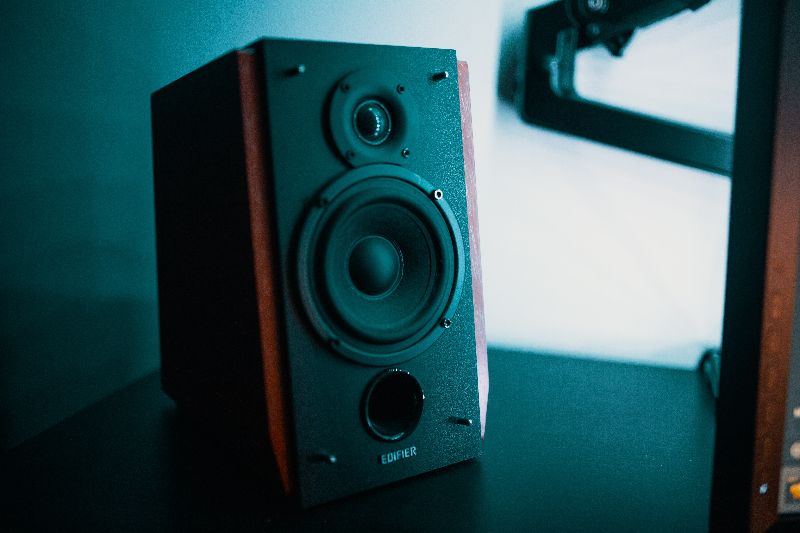The quality of sound emitted by your Hi-Fi system is down to a number of factors including equipment, room acoustics and setup. Yes, you can always buy your way into better sound quality, but there are also simple things that you can do to improve sound quality that cost nothing at all – correct speaker positioning and setup being one of them.
Whether you’re an audiophile or a casual listener, proper speaker setup is essential for getting the most out of your music so in this article, we’ll take a look at the steps you can take to properly set up and optimize your speakers for the best possible sound quality.

Positioning speakers for best sound quality
The first step in good speaker setup is positioning. The location of your speakers has a significant impact on the overall sound quality that you’ll get.
Ideally, your speakers should be placed at an equal distance from your prime listening position and at an angle that forms an equilateral triangle with the listener’s ears. This is known as the “Golden Triangle” and is considered the optimal speaker placement for a stereo setup.
In addition to positioning, the height of your speakers from the ground also plays a role in sound quality. Speakers that are too high or too low can cause sound to be directed at the wrong angles, resulting in a less-than-ideal listening experience. As a general rule of thumb, your tweeters should be at ear level when you are seated. Tweeters are the small drivers that produce high frequencies, and are usually located near the top of a speaker – like the one shown in the picture above.
Another important aspect of speaker setup is the distance from walls and corners. It is best to avoid placing speakers too close to walls or corners, as this can cause bass frequencies to become exaggerated and boomy. A distance of at least 1 meter (3 feet) from walls is recommended.
Tuning for best speaker sound quality
Once you’ve positioned your speakers, it’s time to fine-tune the levels. This can be done by adjusting tone controls on your amplifier or receiver. Bass, midrange, and treble controls allow you to adjust the balance of different frequencies in the music, allowing you to tailor the sound to your personal preferences. However, take care not to overdo it, as excessive adjustments can result in an unnatural sound.
Some amplifiers (and usually AV receivers) also come with a device for level tuning and speaker balance. These are little microphones that are temporarily positioned in the centre of your prime listening position – effectively replacing your human ears for a moment! Run the balancing program and the amp will fire various noises from each speaker in turn, adjusting it’s own levels as it goes. Pretty neat huh!
In addition to tone controls, many high-end speakers come with adjustable jumpers that allow you to fine-tune the speaker’s impedance. These adjustments can have a significant impact on the speaker’s sound quality but changes should be made with care (read your manual, as if you get it wrong you can destroy the speaker).
Cable quality
Lastly, the cable quality you use plays a vital role in sound quality. High-quality cables ensure that the signal is passed through with minimal loss, resulting in improved sound quality. Consider upgrading your cables if you feel that your current cables are not performing well.
Hi-fi speaker cables come in a variety of thicknesses, each with its own set of advantages and disadvantages. The thickness of a speaker cable, also known as its gauge, is measured in American Wire Gauge (AWG) and can range from as thin as 24 AWG to as thick as 12 AWG.
Thin speaker cables, such as 24 AWG, are typically less expensive and more flexible than thicker cables. They are also easier to route through tight spaces and can be bent more easily without damaging the wires inside. However, thin cables tend to have higher resistance than thicker cables, which can result in a loss of signal quality and a decrease in overall sound quality.
Thicker speaker cables, such as 12 AWG, have lower resistance and therefore less signal loss. This results in better sound quality and a more accurate transfer of audio signals. They are also typically more durable and can handle higher power loads. However, thick cables can be more difficult to work with and are typically more expensive than thinner cables.
In general, the thicker the speaker cable, the better the sound quality and the more durable the cable. However, the choice of speaker cable thickness will also depend on factors such as cost, ease of installation, and the specific needs of your audio system.
If you’re not sure which speaker cable is best for you, try asking around on forums or social media groups. Or speak with the experts at your local hi-fi store.
Summing up
All said and done, proper speaker setup and optimization is essential for achieving the best possible sound quality from your system – pretty much for free! With careful positioning, fine-tuning, and by using the highest quality cables that you can, you’ll maximise the potential sound quality of your system. Remember that, to get the best performance, it’s also important to have a room with good acoustics, and to choose the right type of speaker for your room size and layout.